
I reviewed the Vertix 2 back in 2022 and in the years that have passed I've worn it each and ever day. I've primarily used it for running, but more recently cycling (because I injured myself running) and even more recently climbing - although this development primarily coincides with the introduction of the Vertix 2S and its various accessories, as well as the updates within its firmware and associated app. Within this review we'll be running through these, focussing on its relevance to climbers, mountaineers, runners and hillwalkers.
Vertix 2 vs. 2S - What's the Difference?
It's worth noting that this isn't the Vertix 3 - it's the 2S - which indicates that this is an update, as opposed to an entirely new watch; however, the changes made relate to two significant areas as far as the watches performance is concerned - namely the GPS accuracy and the heart rate monitor/sensor - so I'd actually qualify them as quite significant.
From a climber/mountaineer's perspective the GPS update is the most significant update, because climbing and mountaineering both take you to places that are test GPS accuracy to its absolute limit. Picking up a reliable signal is easy on a hillside or ridge, but in the back of a corrie, on crag or cliff, or within the confines of a chimney or corner it can be quite difficult. The new antenna within the Vertix 2S, coupled with an updated/optimised algorithm for how it processes its climbing data, cement the Vertix 2S as 'the watch' for climbers and mountaineers.
From a runner/walkers perspective the improved heart rate monitor is the most significant improvement, as it prevents you from having to wear a separate strap. Wrist mounted heart rate monitors are notoriously unreliable and I outlined some of the limitations I'd found in the Vertix 2 back when I reviewed it in 2022. The Vertix 2S represents a significant step-up and has vastly improved the reliability - even in awkward situations such as races and interval sessions. The addition of the new external Heart Rate Monitor will be of interest to those looking for ultimate accuracy, but maybe isn't as necessary as it once was.
Were there to be a downside to these developments it's that it has had a knock-on effect to the the size (which has increased) and the battery life (which has decreased); however, both of these need putting into perspective, because neither are anywhere near as significant as they might sound. When it comes to the size, whilst it has increased it has done so almost imperceptibly, and I would be amazed if anyone had actually noticed it whilst it's in use (I certainly haven't). When it comes to battery life the thing that the Vertix 2 has in its favour is that it's battery life was absolutely off the scale. It's not like my iPhone that I've got to charge every day, or my old Suunto 9 that would barely last a week - the charge on a Vertix 2S will easily last a month. As such, this isn't a huge issue from my perspective, because unlike the vast majority of other products out there - COROS has battery life to burn.
Vertix 2: 39 Days of Use / 127hrs Standard GPS
Vertix 2S: 36 Days of Use / 118hrs Standard GPS
The final improvement is the option of both a nylon and a silicone wrist band. Despite using the silicone wrist band on my Vertix 2, and being perfectly happy with it, I've really rated the stretchy nylon one provided with the Vertix 2S. It is, in my opinion, a more comfortable option and a lot easier to get a good, snug fit. It's machine washable too, which reminds me - I should probably wash mine!!
On a more minor note it's worth mentioning that there are now three colours/styles to choose from: 'Moon', 'Earth' and 'Space'.
Software Updates
It's important to mention this, because a LOT has changed since I wrote that original review in 2022 - both within the watch itself and the app, so much so that it's hard to know where to begin.
From a UK perspective the integration of grid references was a hugely important update, and an obvious omission back when the Vertix 2 was originally released, although COROS were quick to update this. You can now get that all important grid reference at the click of a button.
The next important update from a climbers perspective is the revision of its various climbing modes, including the introduction of a bouldering mode, alongside indoor and outdoor climbing. This now means you can track everything from a quick session indoors, to a single pitch or multi-pitch outdoors, or even a big wall or alpine route.
The ECG/Heart Rate function has also seen a radical overhaul over the last couple of years, initially by updating to an HRV measurement, but the latest update takes that to a whole new level. You now get a resting overnight heart rate/HRV measurement automatically overnight and a manual 'wellness check' which provides an average heart rate, HRV, stress score, breathing rate and SpO2 data. Both of those are brilliant in terms of assessing your physical state and act as a good guide as to when to push and when to ease off. I've had COVID a couple of times since using the Vertix 2 and Vertix 2S and the data its provided has been extremely useful in preventing me from coming back too soon and ensuring that I am fully rested and recovered.
Another area that's seen a radical overhaul is the Training Status, which provides data on your training load and the impact its having, as well as your base fitness and intensity trend. I find this particularly useful from a running perspective, but it works across the board, highlighting whether the training you are doing is excessive, optimised, maintaining, resuming/performance or decreasing.
Finally, another significant update comes within the mapping, which now includes turn-by-turn notifications, which makes you much less likely to miss a junction whilst out/about.
Accessories
It's important to mention the accessories that are now available, because these are important - with the carabiner being especially so from a climbers perspective and the heart rate strap from a runners perspective.
Carabiner - £69
I had reservations about the original COROS Carabiner, as there was no locking mechanism either on the carabiner itself or the backing plate that you attached the watch to. Given that climbing often involves udging up against rock, and its not unknown for carabiners to come undone and I was always pretty worried about losing a watch which would be expensive to replace!!
COROS have addressed these concerns within the latest version, with both the carabiner and the baseplate now having locking mechanisms, which is a major improvement. The only concerns I have now revolve around its long term durability, as I can see the plastic getting pretty chewed up on it with repeated use. One solution would have been for it to have been made exclusively out of alloy, but I suspect it would have ended up weighing and costing more - and it's not cheap as it is. In fact, at an RRP of £69 it is going to be the most expensive carabiner you'll ever buy!!
Heart Rate Monitor - £69
There's an irony in talking about the merits of the Vertix 2S's updated heart rate sensor, then shortly after discussing how in spite of this you'd still be better off with an external heart rate monitor. In terms of whether its necessary, I see this as being most relevant to climbers who don't like wearing a watch, runners who are after ultimate accuracy, and cyclists who're using an external setup.
I have always hated chest straps and despite having owned several, have disliked using each and every one. Whilst the accuracy they offer is outstanding, their large, plastic design is often quite uncomfortable - plus they're unpleasant to put on whilst damp or wet. The minimalist design of the COROS Heart Rate Monitor, which fits around your arm/bicep, is fantastic in comparison - so much so that you forget about it pretty much from the moment you put it on. The quality of the data you get is that bit greater too, with a much more accurate reading, although I do think that the update within the Vertix 2S has made the difference much more subtle than it was within the Vertix 2.
The other brilliant thing about the heart rate monitor is that you're able to charge it via USB, as opposed to those highly irritating CR2032 batteries, which always seem to run out. Within a single charge you get 38hrs of usage and much like the watch itself, I frequently forget to charge it in light of how long the battery lasts.
The Vertix 2S and Heart Rate Monitor in use at the Flower Scar English Champs Fell Race
In Use
Within this section we're going to break it down into different disciplines, as each different user group has a distinct set of needs, although the Vertix 2S does manage the needs of all of them remarkably well, unlike some watches which tend to focus on one group in particular.
Climbing
Each discipline of climbing has different needs, and these varying needs are now met with the introduction of the various modes - bouldering, indoor and outdoor climbing. It's worth remembering that when the Vertix 2 was released it only featured 'Multi-Pitch Climbing' mode - hence only appealed to one very distinct type of climber/climbing. The Vertix 2S and its respective upgrades/updates is a much more complete package, covering all the bases.
Indoors you've now got various options, depending on whether you're bouldering, lead climbing, top roping or training. There's a variety of different grading systems supported: indoors that'll either involve a V or Font grade for bouldering or a French grade for lead climbing/top roping; outdoors there's a whole host of different options depending on where you're based. From a UK perspective it has the British Trad grade, but it also has incorporates other grading systems including the French, UIAA, YDS, Ewbank, Aid, Ice, and Mixed grading systems.

The key to the success as far as tracking is concerned is the ease of use. When you start using the Vertix 2S you've definitely got to get in the habit of clicking a button before/after each climb, whether that be a pitch, route or boulder problem. It's not the end of the world if you forget, but it does make the data neater. After each you can log the grade and the style in which you climbed it. At the end of the session you'll get a breakdown of how many routes/problems you did, as well as total ascent, activity time, hardest grade, average heart rate, calories burned and training load. The data from each individual session is great, but something I would like to see - which I hope is coming - is more detail from the statistical side, telling you how many routes/problems you've done within a month/year and the distribution of grades within that time frame. This would make it a much more useful tool in terms of assessing progress, but currently that side is a little lacking; however, given the pace of progress I've witnessed within the App/software updates over the last two years I've no doubt that this is coming.
Another minor gripe is the use of the word 'redpoint' as a catch-all term for projecting. Whilst it's an appropriate word to use within sport climbing, it's not within either trad or bouldering, so perhaps a shift to 'projected' would be a more appropriate term as that covers all disciplines.
Something else worth mentioning is that there is a whole load of different workouts that you can integrate on the COROS website, or you can build your own - much like you can with other sports.
Mountaineering
If you're into mountaineering then the Vertix 2S has a whole lot more to offer. All of the information outlined in the section above still stands, but the fact you can plot/plan routes means that you can use it as a navigational aid in the event of bad weather. Even in good weather, it takes the guesswork out, and has the potential to make you safer and more efficient. All the usual caveats apply about carrying a map and compass, and knowing how to use them, but there's no denying that these watches have the potential to make your life a whole lot easier - especially if it is low visibility or dark.
The mapping used within the Vertix 2S is a cut above too. It takes a bit of effort to get this downloaded/uploaded initially, but once done is soon something you forget about. Whilst it's not up to Ordnance Survey standards, it features enough detail to make it meaningful - much more so than a breadcrumb trail.
Walking/Running
There are smaller and simpler watches available from COROS (and other brands) which might appeal more than the Vertix 2S, simply due to their smaller size (Apex 2/Apex 2 Pro/Pace 3). That said, those who're coming from a multi-sport perspective might find the appeal of the various options that the Vertix 2S offers attractive. The other major benefit of the Vertix 2S is that outstanding battery life, which is great if you're going to be away for a while - be that on a multi-day trek or extended holiday. It charges amazingly quickly too, as/when you need to.
We've already talked about the benefits of the upgraded GPS accuracy and HR sensor earlier within the review and both of those points still stand - and are particularly relevant from a walkers/runners perspective. Perhaps the most important update, from a UK perspective, came shortly after the release of the Vertix 2 when COROS integrated British grid references, which was one of the few negative points I had when reviewing it.
Summary
The COROS Vertix 2S is a significant upgrade from its predecessor, not just because of the watch itself - which is indeed an improvement - but because of its associated accessories and substantial software updates, which make it a much more complete package. It's relevance to climbers/mountaineers has increased significantly as a result of this and, at the same time, it's also become a whole lot better for walkers/runners courtesy of the updated heart rate sensor and GPS accuracy. The fact that it achieves this whilst still maintaining best in class battery life is something that continues to amaze me. From a multi-sport persective the COROS Vertix 2S feels like the ultimate sports watch/wearable. Whilst some may baulk at the price, it sits in the ballpark of what you'd expect to pay for a top end performance sports watch, with both Garmin and Suunto's top end models coming in at significantly higher price points (Fenix 7S Pro - Sapphire Solar Edition RRP 739.99 / Vertical Titanium Solar RRP £725). If you're after something cheaper, simpler options are available, and if you don't like those - there's always pen and paper!
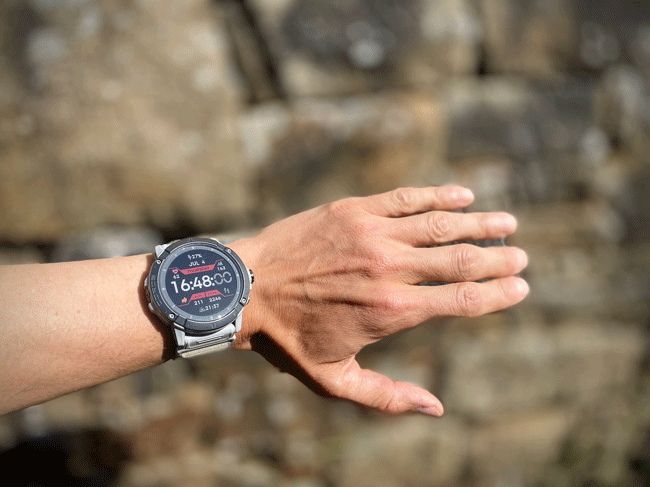























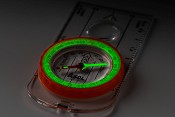
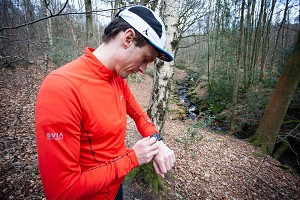
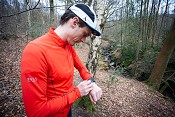
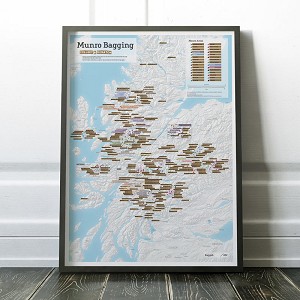
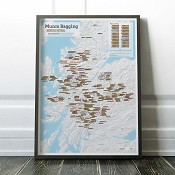
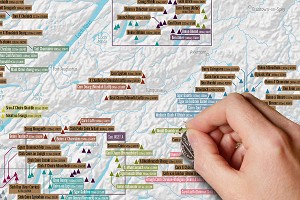

Comments